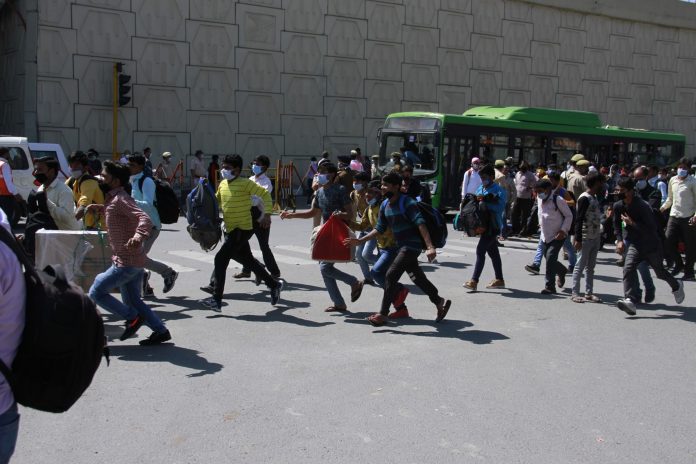
The sight of a vast multitude of migrants attempting to leave the capital for their villages at any cost was a humanitarian nightmare. Was it inept mishandling by the state machinery or deliberate misinformation regarding availability of public transport which led this vast multitude of now homeless and jobless people to violate all precautions against the spread of the deadly coronavirus? This desperate multitude is putting not only the capital but also villages they are heading for under the grave threat of community spread of the virus. One could not have imagined that a day such as this would arrive for people within their own land and in a democracy.
However, we must also realise that for a nation like India with such a huge population and equally large state machinery, a situation such as this is not uncommon and has happened earlier on many occasions for different reasons in the last eight decades. In the present case, the state machinery should have had a plan in place. If proper civil defence and safety procedures had been worked out following SOPs (Standard Operating Procedures), this tragedy could have been avoided. In normal circumstances, the state machinery should have had plans to accommodate this mass of people in proper camps with civic and medicinal facilities.
However, in the absence of such a system, the CIMIC (Civil Military Cooperation) procedures by the state should have been in place, planned and documented in SOPs written decades back. The CIMIC operations would have directly involved the military, assisted by paramilitary units and helped by the home ministry. The affected migrants could have been diverted to proper camps or in acquired buildings like schools and stadiums with medical and other requirements till the crisis was over. The last resort would have been to escort the people involved back to their native places.
However, the only catch in this entire process is that this huge mass of humanity could have a large number of coronavirus-infected people amongst them who would carry the virus to their native places. Consequently, all of them need to be quarantined for the required period and the infected ones separated from the rest.
In the absence of alternative accommodation, the Army and the paramilitary units can create large tented camp areas with field accommodation, including kitchen and toilet arrangements, along with medical and isolation facilities. This team can be supported by experts from the Red Cross and St John’s Ambulance. This process has to be a part of the civil defence operations which should have come into play when the emergency operations started. This process is a part of the internal security doctrine which spells out the necessary policies and SOPs.
After the period of quarantine is over but the emergency situation—the epidemic—continues and the workers have nowhere to work or live and still want to go back home, there would be no other choice but to transport the non-affected populace to their respective districts/ state capitals by rail or road.
So what should the process of transporting people back to their home districts have been?
- Call an immediate meeting of the Chief of the Defence Staff (CDS), Chairman, Railway Board, and a senior secretary from the home ministry.
- The CDS should ask the Army to form a joint Operation Room in the form of NEEOC (National Emergency Evacuation Ops Centre), manned by personnel with appropriate seniority from Services, the Railways and the home ministry.
- The home ministry must ascertain the total number of people involved in the crisis and requirement of transportation along with the destinations involved. This would help the Army to calculate the number of units needed to help build the camps in the first place and thereafter be available to escort the migrants to the places earmarked.
- The Army must provide the required number of units to escort the migrants to their destinations. The units must have the necessary medical support. Also, if any camp is required at the destination then the closest military/Air Force station be asked to take charge along with local administration and medical department.
- The Railways must, as per home ministry projections, calculate and provide the required number of trains which would transfer the people with the Army escorts to the destinations. Stations en route must be informed and asked to prepare for any eventuality.
- The home ministry, along with the destination state, will ensure that proper camps to receive the transferred people are made ready along with quarantine facilities. Here the local police and paramilitary units can be put in aid of army and the administration. Most importantly, paramilitary forces like BSF and ITBP should be made ready if required to assist the army in any way.
- The Air Force, too, should be involved with at least one unit of medium lift helicopters and medical evacuation helicopters to be ready with emergency medical teams.
All the above mentioned organisations must be kept in direct contact with the NEEOC at Delhi. As the saying goes, the more we sweat in peace, the less we bleed in war.
—The writer is a military analyst and air accident investigator
Lead Picture: UNI

